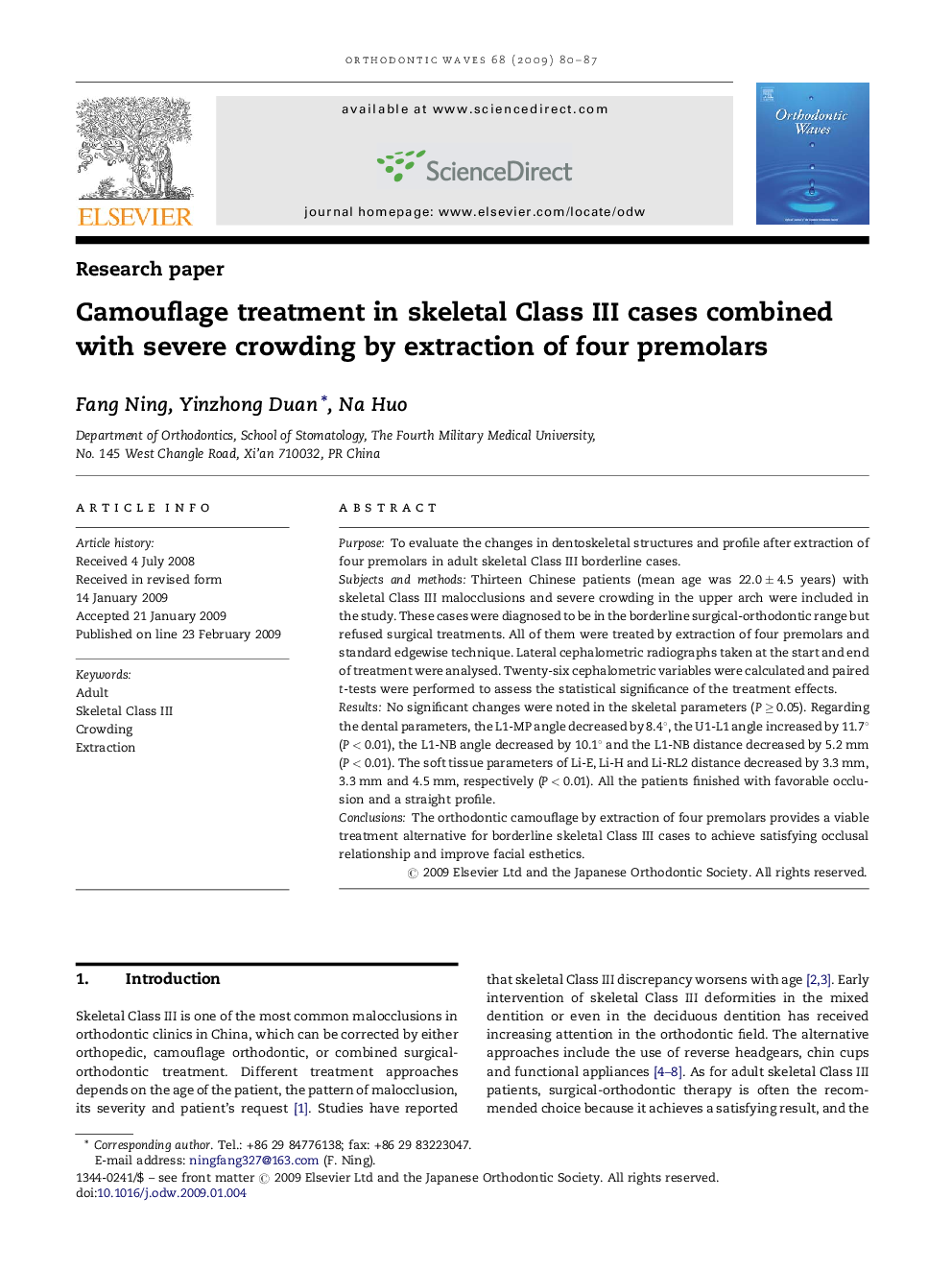| Article ID | Journal | Published Year | Pages | File Type |
|---|---|---|---|---|
| 3170708 | Orthodontic Waves | 2009 | 8 Pages |
PurposeTo evaluate the changes in dentoskeletal structures and profile after extraction of four premolars in adult skeletal Class III borderline cases.Subjects and methodsThirteen Chinese patients (mean age was 22.0 ± 4.5 years) with skeletal Class III malocclusions and severe crowding in the upper arch were included in the study. These cases were diagnosed to be in the borderline surgical-orthodontic range but refused surgical treatments. All of them were treated by extraction of four premolars and standard edgewise technique. Lateral cephalometric radiographs taken at the start and end of treatment were analysed. Twenty-six cephalometric variables were calculated and paired t-tests were performed to assess the statistical significance of the treatment effects.ResultsNo significant changes were noted in the skeletal parameters (P ≥ 0.05). Regarding the dental parameters, the L1-MP angle decreased by 8.4°, the U1-L1 angle increased by 11.7° (P < 0.01), the L1-NB angle decreased by 10.1° and the L1-NB distance decreased by 5.2 mm (P < 0.01). The soft tissue parameters of Li-E, Li-H and Li-RL2 distance decreased by 3.3 mm, 3.3 mm and 4.5 mm, respectively (P < 0.01). All the patients finished with favorable occlusion and a straight profile.ConclusionsThe orthodontic camouflage by extraction of four premolars provides a viable treatment alternative for borderline skeletal Class III cases to achieve satisfying occlusal relationship and improve facial esthetics.
